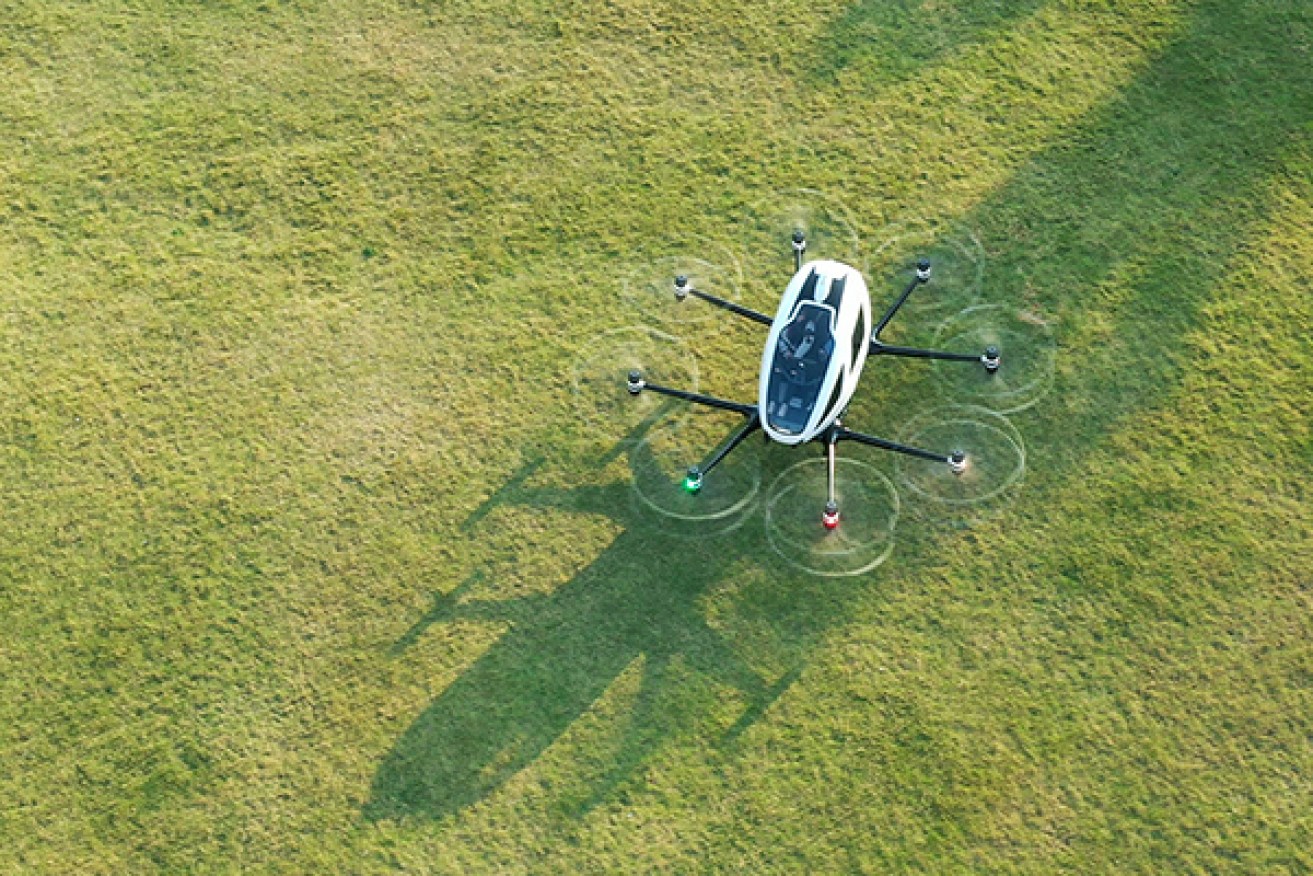China certifies air taxis as safe, and they could be in our skies in two years


EHang's automated, two-person air taxi has been approved for passenger flight. Photo: EHang
From The Jetsons to Cyberpunk 2077, flying cars and vertical transport have captured the attention of science fiction fans for decades.
EHang, a Chinese company listed on the US Stock Exchange, is now a step closer towards turning what was once a pipe dream into reality after regulators certified its automated flying taxi as airworthy, and one expert believes Australia will have flying taxis in the near future.
Dr Tony Webber, CEO of Airline Intelligence and Research, said he believes Australia will have businesses operating vertical flight transport within two years.
“A lot of traffic comes into the city that’s perfectly suited to the vertical take-off and landing aircraft, which is what some people call the air taxi,” he said.
“There will be ultra-short haul demand, like from the city to the airport for business and CEO-type passengers, but there is an even deeper market.”
Electric vertical take-off and landing vehicles, or eVTOLs, have struggled to take off in the past, but companies are racing towards having a viable, profitable and safe product for the mass market.
Webber said there will be a lot of demand for travel between population centres within states, like from Newcastle or the Central Coast to Sydney, using EVTOLs.
“They’re catching a train between the airport and maybe a bus or shuttle service, and it’s just not very efficient,” he said.
“It’s also deeply affected by the risk of a major traffic incident.”
Ahead of the competition
Other companies are developing their own eVTOLs, with Germany’s Volocopter aiming to have a working product available at the 2024 Paris Olympics, but EHang is positioned to start commercial operations first.
Huazhi Hu, chairman and CEO of EHang, said the certificate issued by the Chinese airline authority shows the vehicle is qualified for passenger flight and marks “a significant chapter in civil aviation history”.
“We will launch commercial operations of the EH216-S unmanned eVTOLs, prioritising safety above all,” he said in a statement.
“This will enable us to steadily progress towards our strategic goal to be a urban air mobility platform operator, and commit to our mission to enable safe, autonomous and eco-friendly air mobility accessible to everyone.”
EHang’s EH216-S is equipped with 16 propellers, each with its own motor, and can travel at 100km/h for about 25 minutes, according to the company.

EHang’s EH216-S in flight. Photo: EHang
The price touted by EHang is about $475,000.
Webber said the design of eVTOLs are safer than traditional helicopters, which only have one vertical and one horizontal propeller.
“The Civil Aviation Safety Authority (CASA) will check them out because they’re something flying in the air, so it goes under inspection,” he said.
“They’ve got an enormous number of propellers, and they’re all working independently.”
In February 2022, CASA said it was working with industry and government to co-design an aviation safety regulatory roadmap for advanced air mobility vehicles and eVTOLs.
Historical development
The first attempt to invent a flying car predates the Ford Model T, the first mass-produced automotive vehicle, when the Curtiss Autoplane achieved lift-off in 1917, but failed to sustain flight.

The Curtiss Autoplane left the ground in 1917, but failed to sustain flight. Photo: Flight Magazine
Webber said viable eVTOLs are a huge development for the airline industry, but it comes with challenges.
“You’re going to have to change the way you refuel those aircraft. You’ll have to have a charging station wherever you are going to land,” he said.
“In the case of vertical take-off and landing, you’ll need what’s called a vertiport.”
The airline industry is also preparing for eVTOLs, according to Webber, with several partnering with companies to explore electronic jets and vertical take-off to replace short-haul regional flights.
Several Australian companies are developing their own vehicles, including AMSL Aero, which successfully completed a test flight in February, and a hydrogen-powered aircraft designed by Vertiia.








